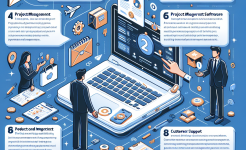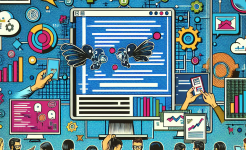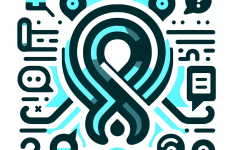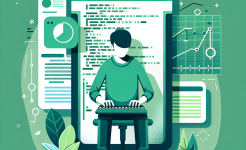Understanding the Project Management Triangle
The project management triangle, also known as the "iron triangle," is a fundamental concept that illustrates the interdependence of time, cost, and quality. Each side of the triangle represents one of these elements, and any change to one inevitably affects the others. For example, reducing the project timeline may require additional resources, thereby increasing costs. Similarly, enhancing the quality of deliverables might extend the project duration and inflate the budget. Understanding this relationship is crucial for project managers, as it helps them anticipate the potential impacts of their decisions and adjust their strategies accordingly.
To effectively manage the triangle, project managers must first clearly define the project's objectives and constraints. This involves working closely with stakeholders to establish realistic expectations regarding time, cost, and quality. Once these parameters are set, project managers can use them as a framework for decision-making throughout the project lifecycle. For instance, if the primary constraint is time, the manager may need to prioritize speed over perfection, accepting that some aspects of quality may be compromised. Conversely, if quality is the top priority, the manager may need to allocate additional resources or extend the timeline to ensure that standards are met.
Ultimately, the key to balancing the project management triangle lies in flexibility and adaptability. Project managers must be prepared to reassess their priorities and make adjustments as the project progresses. This may involve reallocating resources, revising timelines, or renegotiating scope with stakeholders. By remaining vigilant and responsive to changes, project managers can navigate the complexities of the triangle and steer their projects toward successful completion.
Strategies for Balancing Time, Cost, and Quality
One of the most effective strategies for balancing time, cost, and quality is to adopt a phased approach to project management. Breaking the project into smaller, manageable phases allows for greater control over each element of the triangle. For example, during the planning phase, the focus might be on cost and quality, with the aim of developing a detailed and accurate budget. During the execution phase, the emphasis might shift to time and cost, with the goal of completing tasks efficiently and within budget. By addressing each element in a targeted manner, project managers can reduce the risk of conflicts and ensure that all aspects of the project receive adequate attention.
Another critical strategy is to leverage technology and tools that enhance efficiency and accuracy. Project management software, for instance, can provide real-time insights into project progress, helping managers identify potential bottlenecks and allocate resources more effectively. Additionally, tools such as automated testing and quality assurance systems can help maintain high standards of quality without significantly increasing costs or timelines. By integrating these technologies into their workflows, project managers can streamline processes, reduce errors, and achieve a better balance between time, cost, and quality.
Communication also plays a vital role in balancing the project management triangle. Regular and transparent communication with stakeholders ensures that everyone is aligned with the project's objectives and constraints. It also facilitates the identification and resolution of issues before they escalate. For example, if a team member encounters a problem that could impact the timeline, timely communication allows the manager to make the necessary adjustments, such as reallocating resources or revising the schedule. Effective communication fosters collaboration and trust, which are essential for navigating the complexities of the project management triangle.
The Role of Risk Management in Balancing the Triangle
Risk management is an often-overlooked but critical component of balancing time, cost, and quality in project management. Every project is subject to uncertainties, and failing to account for these risks can lead to delays, cost overruns, and compromised quality. By identifying potential risks early in the project, managers can develop contingency plans to mitigate their impact. For instance, if there is a risk of supplier delays, the manager might secure alternative suppliers or adjust the project timeline to accommodate potential disruptions. Proactive risk management helps ensure that the project remains on track, even in the face of unforeseen challenges.
In addition to identifying risks, project managers must also prioritize them based on their likelihood and potential impact. High-priority risks, such as those that could significantly affect the project's timeline or budget, should be addressed first. This might involve allocating additional resources, revising the project plan, or implementing risk mitigation strategies. Lower-priority risks, while still important, may require less immediate attention. By prioritizing risks, managers can focus their efforts on the areas that are most likely to impact the project's success, thereby maintaining a better balance between time, cost, and quality.
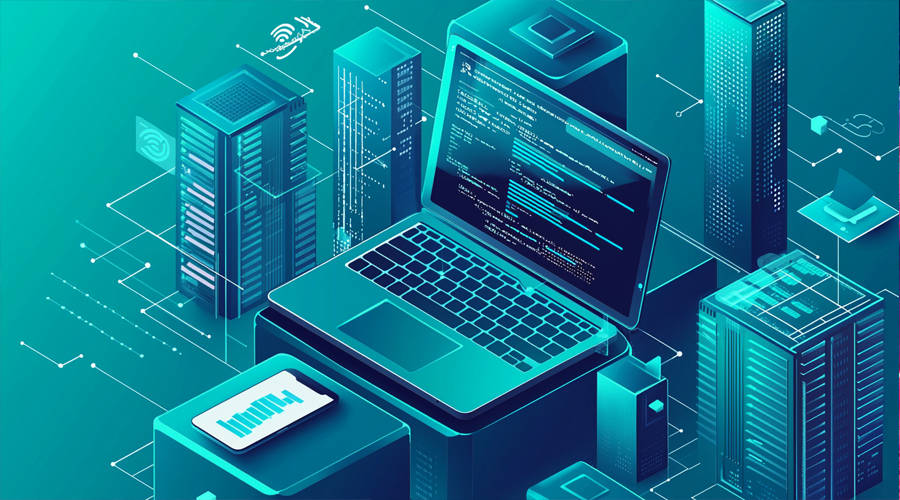
Finally, risk management is an ongoing process that requires continuous monitoring and adjustment. As the project progresses, new risks may emerge, and existing risks may evolve. Project managers must remain vigilant and be prepared to adapt their strategies as needed. This might involve revisiting the risk management plan, reassessing priorities, or implementing new mitigation measures. By staying proactive and responsive, project managers can effectively manage risks and maintain the delicate balance between time, cost, and quality throughout the project lifecycle.
Conclusion
Balancing time, cost, and quality in project management is a complex and multifaceted challenge that requires a combination of strategic planning, effective communication, and proactive risk management. The project management triangle serves as a valuable framework for understanding the interplay between these elements, but it is the manager's ability to navigate this dynamic relationship that ultimately determines the project's success. By adopting phased approaches, leveraging technology, and maintaining open lines of communication, project managers can enhance their ability to balance these competing demands and deliver successful outcomes.
Moreover, the role of risk management cannot be overstated. Identifying, prioritizing, and mitigating risks is essential for maintaining the balance between time, cost, and quality. Project managers must remain vigilant and adaptable, ready to adjust their strategies as the project evolves. By doing so, they can navigate the uncertainties and complexities inherent in project management and steer their projects toward successful completion.
In conclusion, while the challenge of balancing time, cost, and quality is ever-present in project management, it is not insurmountable. With the right strategies, tools, and mindset, project managers can achieve this balance and deliver projects that meet or exceed stakeholder expectations. The key lies in understanding the dynamics of the project management triangle, leveraging effective strategies, and remaining proactive in managing risks. By doing so, project managers can navigate the complexities of their roles and drive their projects to successful outcomes.
FAQ
Q1: What is the project management triangle, and why is it important?
The project management triangle, also known as the "iron triangle," is a model that illustrates the interdependence of time, cost, and quality in project management. It is important because it helps project managers understand that any change to one of these elements will inevitably affect the others. By using the triangle as a framework, managers can make informed decisions and develop strategies to balance these competing demands effectively.
Q2: How can technology help in balancing time, cost, and quality?
Technology can play a significant role in balancing time, cost, and quality by enhancing efficiency and accuracy. Project management software provides real-time insights into project progress, helping managers identify bottlenecks and allocate resources effectively. Automated testing and quality assurance systems can maintain high standards of quality without significantly increasing costs or timelines. By integrating these tools into their workflows, project managers can streamline processes, reduce errors, and achieve a better balance between these elements.
Q3: Why is risk management crucial for balancing the project management triangle?
Risk management is crucial because every project is subject to uncertainties that can impact time, cost, and quality. By identifying potential risks early and developing contingency plans, project managers can mitigate their impact and keep the project on track. Proactive risk management helps ensure that the project remains aligned with its objectives and constraints, even in the face of unforeseen challenges. Continuous monitoring and adjustment of risks are essential for maintaining the delicate balance between these elements throughout the project lifecycle.
ARTICLE TITLE :How to balance time, cost and quality in project management ,AUTHOR :ITpmlib


